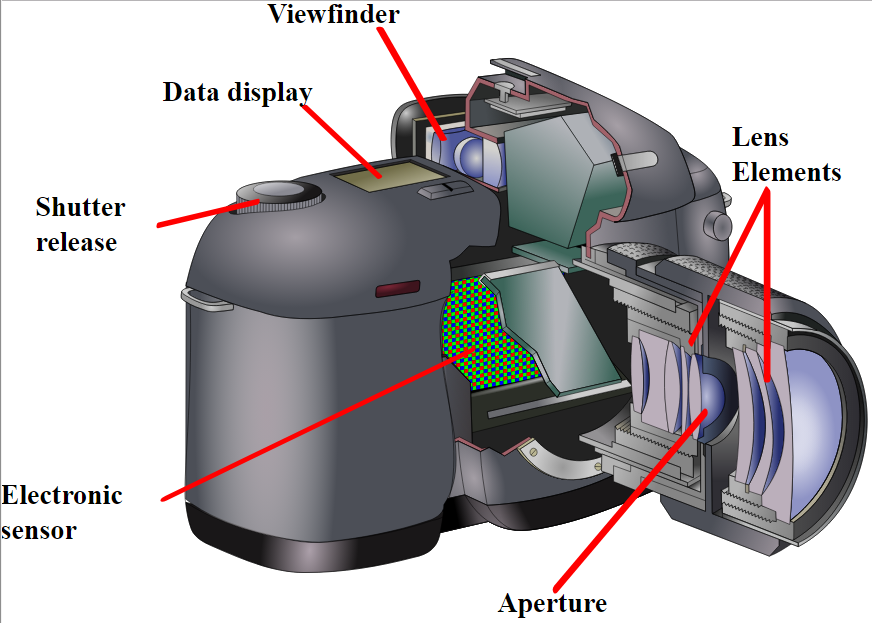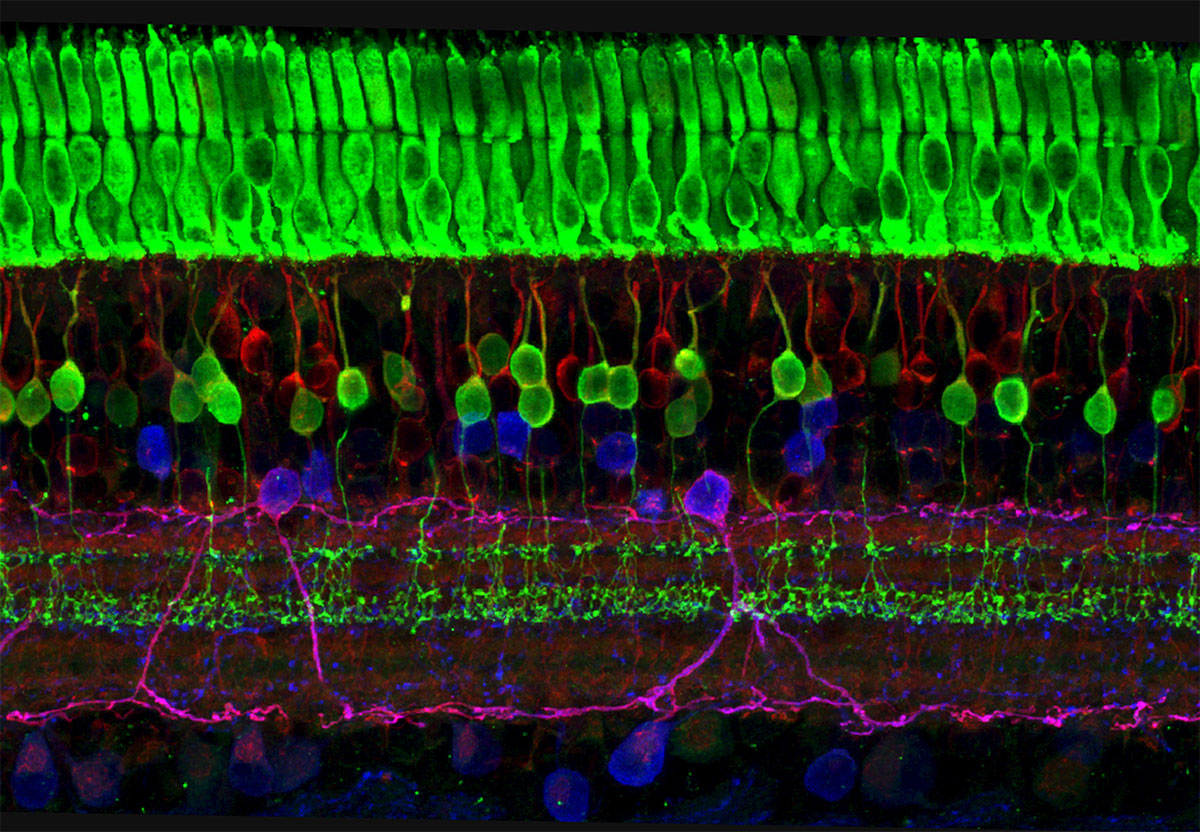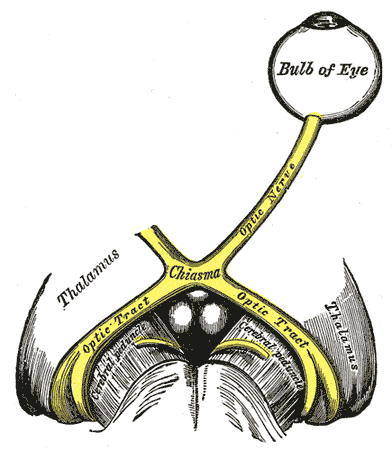How the Brain Sees
by Andy Boyd
Today, a bodily bottleneck. The University of Houston presents this series about the machines that make our civilization run, and the people whose ingenuity created them.
In many ways the human eye operates like a camera. But what really makes the eye interesting is the ways in which it doesn't.
In his book The Forgetting Machine, Rodrigo Quiroga walks us through the steps involved in seeing. At first glance, the eye appears to operate much like a digital camera, where light entering through the lens stimulates millions of individual pinpoints called pixels. Pixels store the color and brightness of the image at that point.

Reflex camera Photo Credit: Wikimedia
The eye has individual photoreceptors that are akin to pixels. There are 125 million of them in each eye - roughly ten times the number of pixels found in a smart phone camera.

Ziess microscopy Photo Credit: Flickr
Information from these photoreceptors is shuttled to the deeper recesses of the brain through the optic nerve. And here's where the story gets interesting. The optic nerve is small and slow - a bottleneck for the flow of information. If we took a single photo from a smart phone and transmitted its data file through the optic nerve, it would take about two seconds to reach the brain. One snapshot, two seconds. How can that be? We certainly see more than a snapshot every couple of seconds.

The left optic nerve and the optic tracts Photo Credit: Wikimedia
The short answer is that the eyes don't transmit visual images to the brain in the form of pictures. They can't. The bandwidth just isn't there. The eyes are somehow efficiently cherry picking and repackaging the visual data, and they're doing so in such a way that, when other parts of our brains receive it, our perception of the world is the smooth, continuous visual flow we're all familiar with. "This is one of the wonders of the brain," writes Quiroga, "one of the many mysteries that keep us neuroscientists up at night."
We do know some things. Most of what we see in detail takes place in the very center of our visual field, in an area about the size of your thumbnail when held at arm's length. Test it yourself. Hold two thumbs out in front of you and focus on one thumbnail. You're aware of the other thumbnail, but only peripherally. If most of the information sent through the optic nerve comes from a small number of highly focused photoreceptors, that reduces the information flow through the optic nerve.
We also know that information on the periphery of our field of vision appears to be packaged in a different, space-efficient way. If we're about to be struck from the side by a car, we don't need to see the make and model. We simply need enough visual information to get out of the way.
Finally, we almost certainly use memories to unconsciously fill in visual gaps. If I see a piano in the room out of the corner of my eye, I can draw upon my previous encounters with pianos to realize it's a piano. Such memories wouldn't travel through the optic nerve.
Of course, we have no idea exactly how all the pieces fit together. Like author Quiroga, I marvel at the wonders of the brain. But thankfully, in my job it doesn't keep me up at night.
I'm Andy Boyd at the University of Houston, where we're interested in the way inventive minds work.
(Theme music)
This essay is largely based on information found in the book The Forgetting Machine.
The figure of two seconds for one picture to reach the brain was calculated using an estimate of the throughput of the optical nerve of 10 megabits/second. Sampling the size of JPEG image files downloaded from a cell phone with a 13 megapixel camera, I estimated an average of 20 megabits per file, thus leading to the two second estimate. It's of interest to note that JPEG files are compressed - they don't contain exact information from all the camera's pixels. If raw image files containing all the pixel information had been used for comparison, the time for a single picture to reach the brain would jump significantly.
Optic Nerve. From the Wikipedia website: https://en.wikipedia.org/wiki/Optic_nerve. Accessed December 12, 2017.
Rodrigo Quian Quiroga. The Forgetting Machine: Memory, Perception, and the "Jennifer Aniston Neuron." Dallas, Texas: BanBella Books, Inc., 2017.